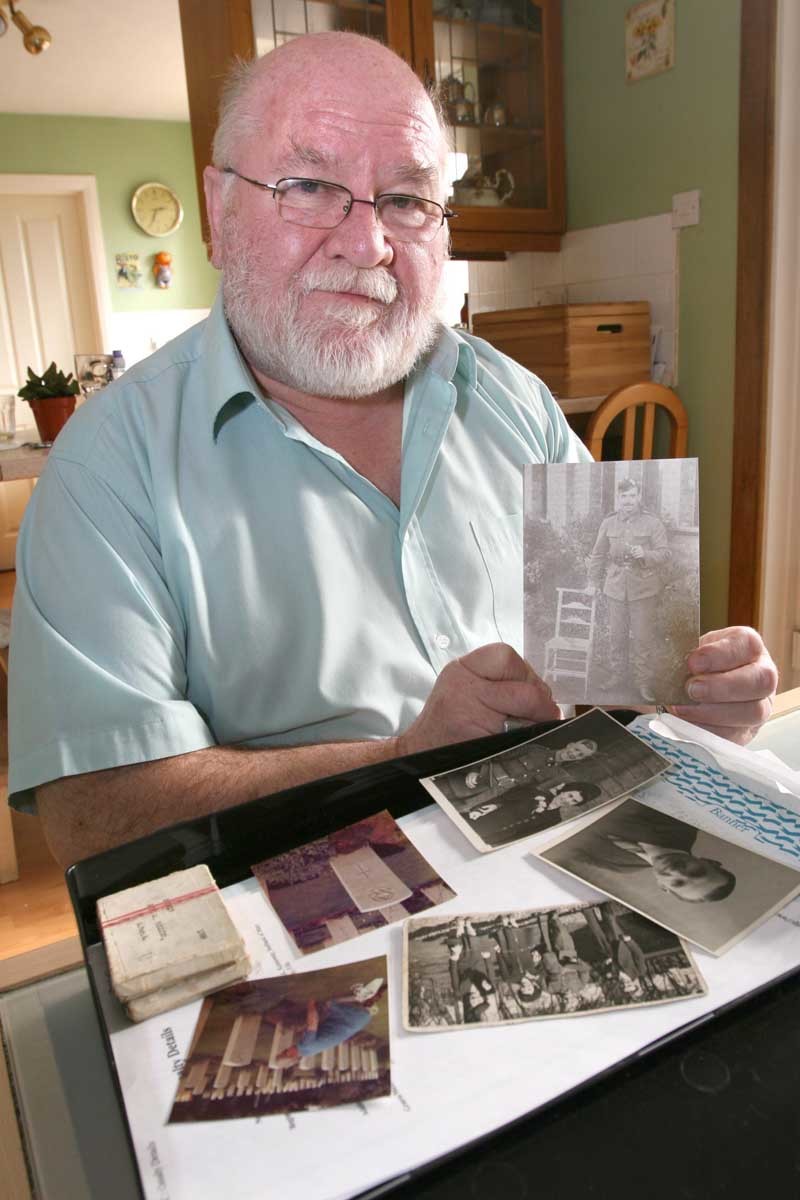A Fife minister is keeping his fingers crossed that DNA samples will finally help him find his grandfather’s remains, almost 94 years after his relative was killed during the first world war.
The Rev Mitchell Collins, of Glenrothes, is praying that his family will soon be able to lay flowers on the grave of Private Mitchell Collins, who is thought to have died at Fromelles in France in 1916.
The attack at Fromelles on the night of July 19, 1916, turned out to be hugely costly for the allies, with more than 1500 Britons and over 5500 Australians killed, wounded or missing in just one day.
After around 250 bodies were found in a mass grave at Pheasant Wood near Fromelles two years ago, a programme of DNA testing was launched in a bid to establish their identities.
It is understood a joint announcement will soon be made by the UK and Australian governments, revealing how many of the men have been identified and who they were.
One of those who contributed a sample was Mr Collins, who hopes the mystery surrounding what happened to his grandfather will finally be solved.
“It would be massively moving if we could find my grandfather at last, and it would complete our family history.
“It was an absolute mess, a massacre at Fromelles, and we’re just hoping that we will finally know the truth,” he said.
“We can’t be too hopeful as there are other families out there hoping to find their relatives, but I know now that he will be recovered some way or another.”
With the help of Oxford Archaeology, the Commonwealth War Graves Commission has been carrying out painstaking research over the past two years and, by cross-referencing casualty records, a list of possible identities was created.
Private Collins, from Kennoway, was just 18 when he was seconded to fight with the Royal Warwickshire Regiment in 1916. Although it recruited mainly from the English Midlands it had a large number of Scots serving with it.
He was one of 11 soldiers from Tayside and Fife thought to have been buried by the Germans in the mass grave behind enemy lines — with Corporal David Simpson from Kirkcaldy, lance-corporals John Melville, William Richardson and David Marshall, all of Perth, George Galloway of Buckhaven, Alexander Dryburgh of Wemyss, Alex Gray of Wormit, and Ernest Paton, John Smith and David Thom, all from Forfar, also on the list.
All soldiers found in the grave are to be re-interred, with full military honours, at a new cemetery nearby.
An event will be held at Fromelles on July 19 to mark the completion of the excavation of the men’s remains and their reburial, and Mr Collins is hoping to be there.
“I had to give a DNA sample four or five months ago after they sent out a do-it-yourself DNA kit, and it’s just a case of waiting now,” Mr Collins added.
“It would be a fitting closure if we could find him.”
A joint identification board will meet annually for the next five years to consider any new evidence regarding the men who are still unidentified.
